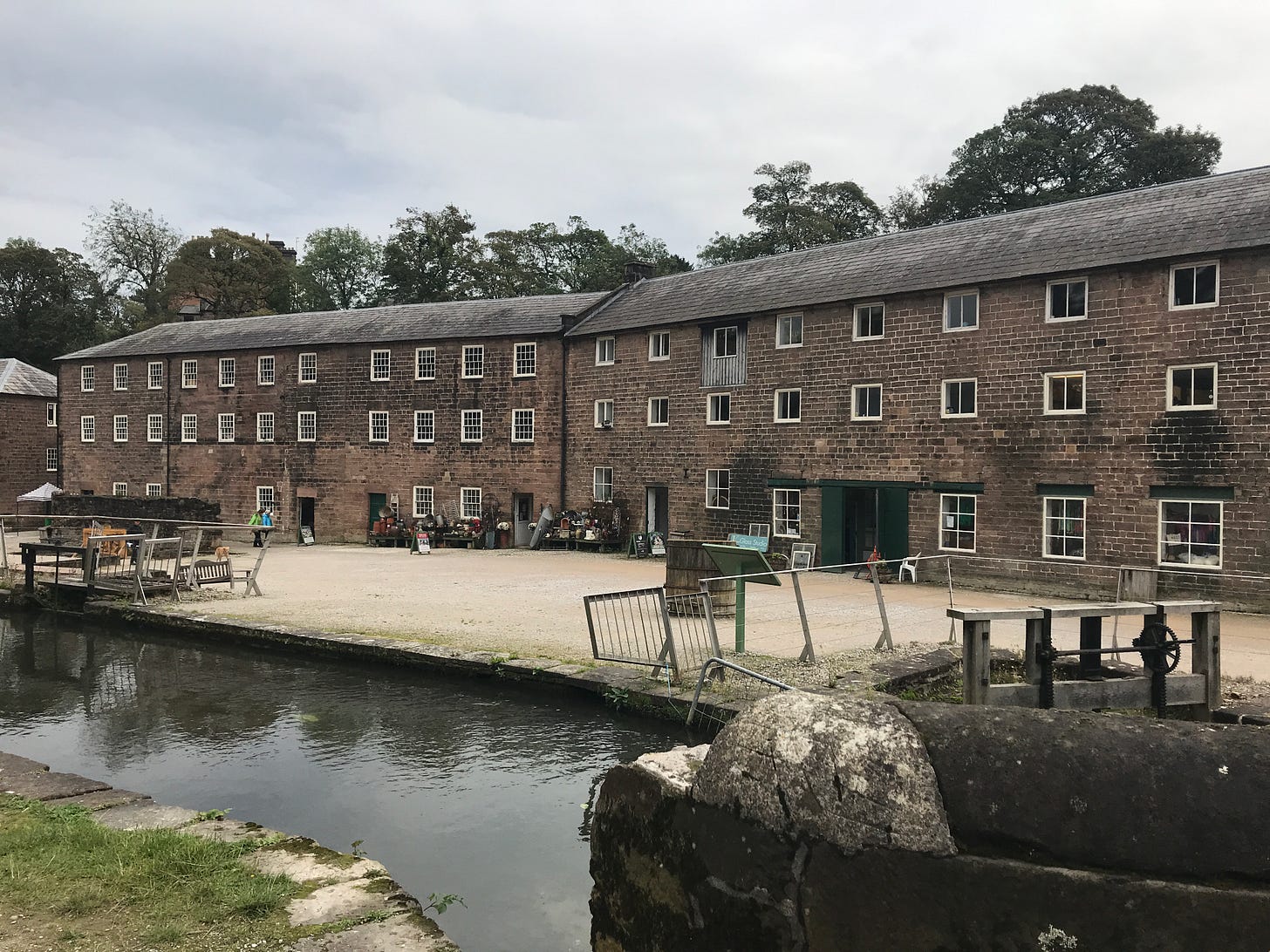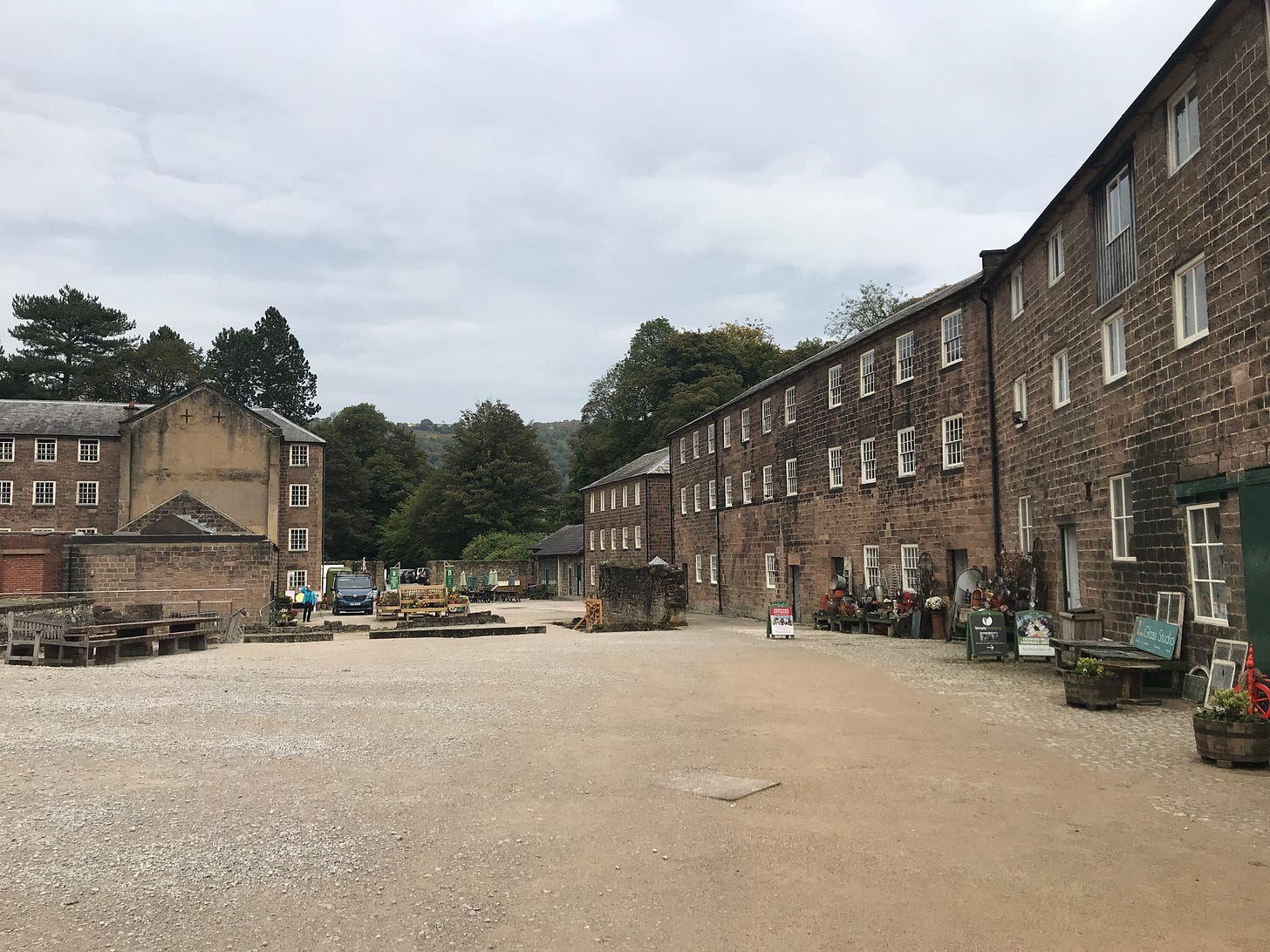Britain has a rich industrial heritage and it is good to see that some of it has been preserved today.
Cromford Mill was built in 1771 by the great entrepreneur, Sir Richard Arkwright. It was the world’s first successful water-powered cotton spinning mill. Cromford lies within the Derbyshire Peak District and the area has plenty of water. More importantly for Arkwright he found a year-round supply in Cromford. A supply of water from the Cromford Sough which drained water from Wirksworth lead mine, together with the Bonsall Brook was used to power the mill.
Sir Richard patented a water frame, a spinning frame powered by water. This invention played a part in speeding up the cloth making process. The Arkwright water frame was able to spin 96 threads at a time, which was an easier and faster method than ever before.
The mill started with 200 workers and due to there not being a sufficient number of available workers locally, Sir Richard Arkwright built houses for his employees. He was one of the first to do so. Cromford Mill is described as the first factory housing development in the world. His workers were provided with shops, pubs, chapels and a school.
Before we think that this was an idyllic place to work, the gate to the mill was closed at 6 am and 6 pm. Any who failed to get through lost a day’s pay and fined another. That must have been very harsh on any who lost money and not easy to regain.
The mill ceased operation in the 19th century. It was used by other businesses and more modern units were added to the site. These were pulled down after the Arkwright Society purchased the site in 1979 and began the extensive renovation work, which is still ongoing today.
Cromford Mill is free to enter, there is a charge to enjoy the Visitor Center or have a guided tour. It is the centrepiece of the Derwent Valley Mills UNESCO World Heritage Site that runs from Matclock Bath just north of Cromford to Derby city centre further south.
Across the road is the Cromford Canal that used to transport goods from the mill until the advent of the railway. The canal is partially restored and visitors can take a trip on a narrow boat.
Do have a walk around Cromford, it is a lovely village with a mill pond, and a range of small shops and cafes. As you do you will see the houses that Arkwright has built for the workers. There is also Scarthin Books of Cromford, described by The Guardian Online as one of the world’s best 10 bookshops. The bookshop also includes a very well recommended cafe.
Cromford is a special place that reveals a time gone by. A time and place that some of my ancestors lived and worked in.





